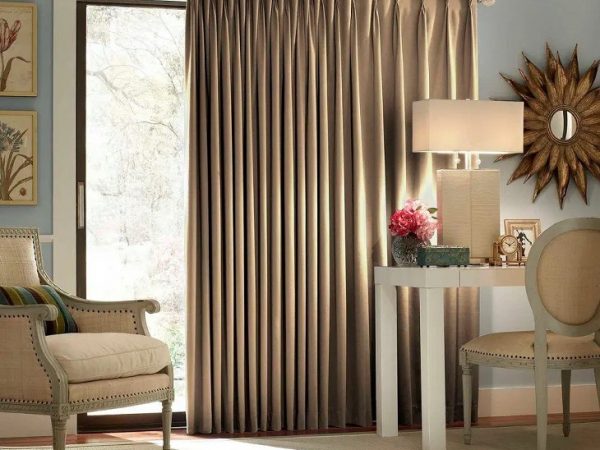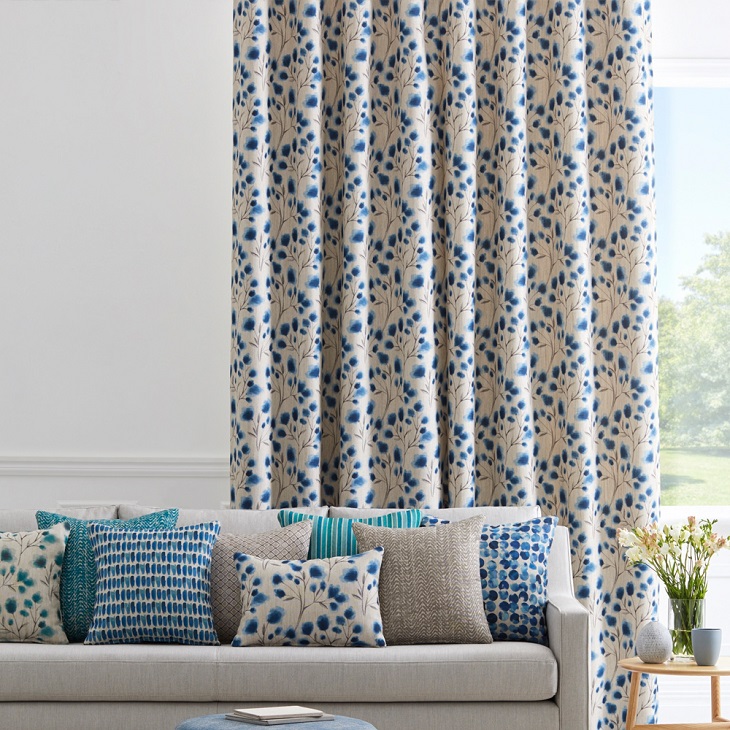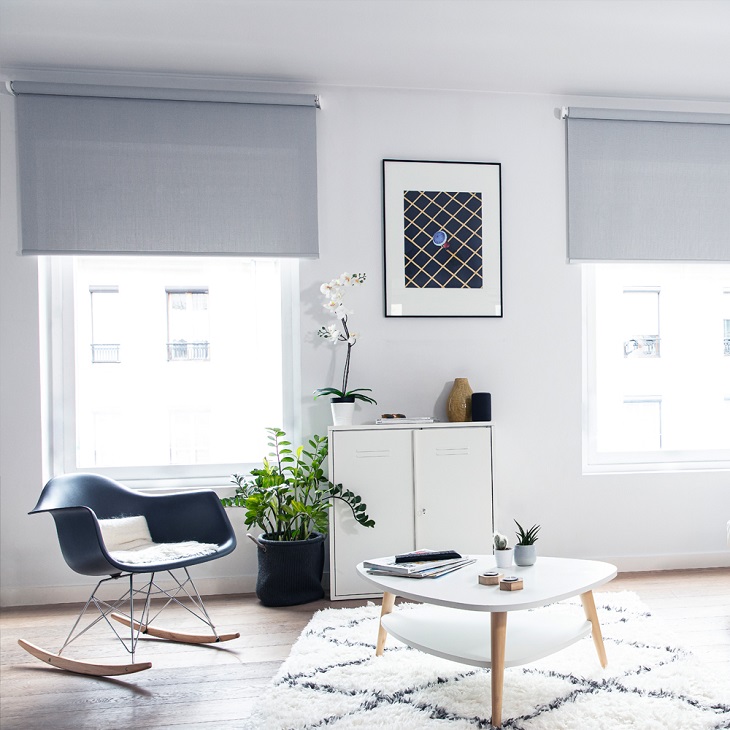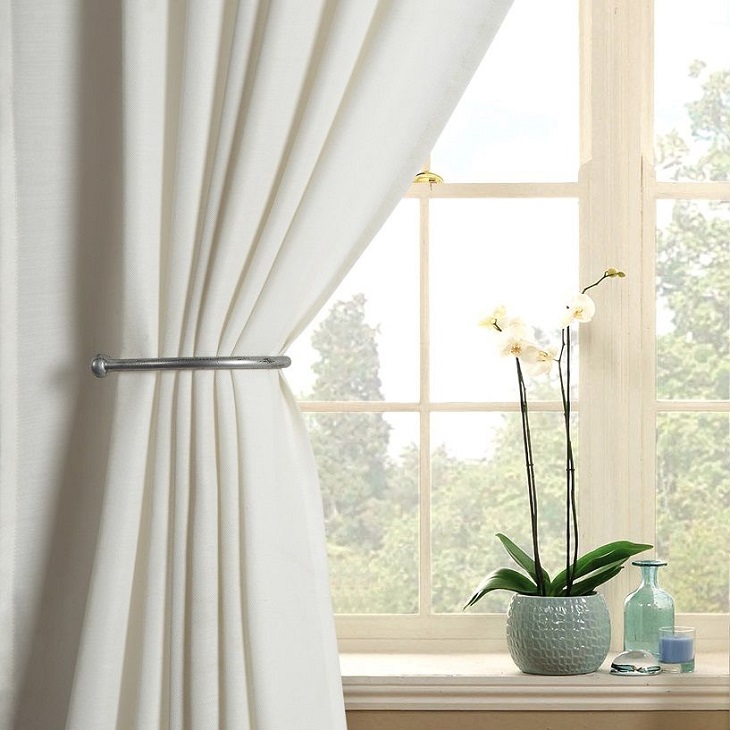17
Aug

Window dressing is an essential element in interior design that serves both functional and aesthetic purposes. It plays a crucial role in regulating natural light, maintaining privacy, and enhancing the overall ambience of the room. When done right, it can make your home look beautiful and enhance the overall atmosphere. But which way do you go? Are traditional curtains the best solution, or maybe some modern blinds? What about both? Can you have both curtains and blinds and get the best of both worlds?
Since there’s not one right answer, and many things depend on your preferences and the look you would like to achieve, there are no strict rules to follow, but rather some guidelines that should help you narrow down the options.
Curtains and blinds offer limitless options and can be integrated into almost any space, enriching the ambience and making it feel warmer. With the variety of fabrics, colours, materials, and patterns that you can choose from, it can be quite an overwhelming decision to make. If you don’t know where to start or simply don’t have time to go through all the options, you can always turn to professionals.
When it comes to creating the best look for your space, you want the help of people who know what they are doing, like the experts in curtains and blinds Brisbane has to offer. They will give you advice as to which combinations will be suitable for your space and its function, as well as the right measurements. Another way to go is to do it yourself, in which case, you might use some tips.

Curtains serve multiple purposes and give you an abundance of choice of fabrics and designs. They will improve the aesthetic appeal of the room by adding a soft touch and creating a warm and inviting atmosphere. They also provide light control. If you choose tightly woven fabrics, you can block the bright light and protect your privacy.
If you opt for sheer fabrics, you can let natural light filter into the space while maintaining some degree of privacy. Curtains can also absorb sound, dampen noise, and improve insulation. They do need some maintenance, though, as they can collect dust, but with regular washing or dry-cleaning, you have a beautiful and practical window dressing.
With their wide range of materials and styles, you will find that blinds have plenty of advantages as well. They offer more precise control over the amount of light entering the room due to their adjustable slats and take up less space than curtains. The lower maintenance, durability, and modern appeal make them ideal if you are looking for a contemporary look for minimalist interior designs. Since not all styles of blinds are suitable for every room, you should consider what type works best for each room.
• Roller Blinds: Featuring a headrail and fabric which rolls down, these blinds have a sleek silhouette and minimalistic look which makes them perfect for smaller spaces. They come in different colours, usually made of polyester, cotton and silk.
• Roman Blinds: Sophisticated Roman shades are large layers of drapes that come on top of itself when raised, giving you an elegant look.
• Venetian Blinds: Mostly made of aluminum, the horizontal Venetian blinds are suitable for spaces where moisture will damage other window coverings, like the bathroom or kitchen.
• Vertical Blinds: Ideal for living rooms, dining rooms, and large windows, the vertical blinds with slats allow you to completely open or close the windows.

The combination of custom curtains and blinds offers a hybrid approach that maximizes the benefits of both window covering types.
• Enhanced Light Control: During the day, you can open the blind to let in natural light but close the curtains to keep your privacy.
• Versatility: Using both window treatments allows you play with various textures, colours, and patterns to create a unique and stylish look.
• Improved Insulation: The combination of heavy curtains with blinds can enhance the room’s insulation, keeping it warmer in winter and cooler in summers.
To achieve the most stylish look for your room, choose the most suitable style of blinds and complement them with the right curtains. If you have a blackout blind you can pair it with a sheer curtain, or if you opt for heavy curtains, you can get blinds that let in light to some degree.
Now, this is where you can play it safe or go bold if you trust your hidden design skills. Striking patterns and hues can overwhelm the room, so tread carefully. A solid-coloured blind will go well with a patterned curtain that has the same hue, and give a bolder pattern a bit of anchoring. Another way to go is to use different shades that don’t overpower the space but work in harmony.
You can use made to measure curtains and blinds to create an effect of taller and wider windows. By installing the blinds above the frames you draw the eye up and make the windows look taller. You can also elongate the windows by choosing floor-length curtains placed at the same height as the blinds. To match their height, opt for curtains that are also a few inches wider than the frames to get maximum width.

Adding accessories can complete the look and make it easier for you to open and close the curtains. Tiebacks are not only functional but very beautiful as well, and pelmets and valances will add a soft touch and give the whole window dressing a structured look.
The great thing about curtains and blinds is that you can use them individually or pair them together seamlessly. Find the right combination of window furnishings that fit your preferences and the space by varying the designs for different rooms. Use different colours, patterns or designs, but tie the look together by keeping at least one thing in common.